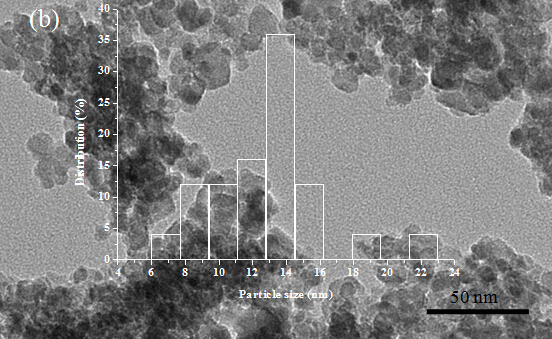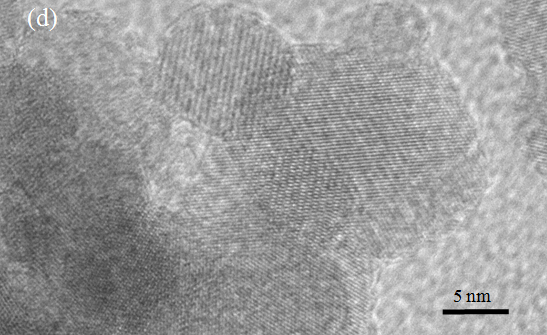Acid−base bifunctional nanocatalysts can directly on-pot produce biofuels and chemical from biomass. Particularly, some magnetic metal oxides that are active and recyclable.
Mr. Hu Li, a PhD student, co-supervised by Prof. Song Yang (Guizhou University) and Prof. Zhen FANG (Biomass Group, Xishuangbanna Tropical Botanical Garden, CAS) successfully synthesized bifunctional ZrFeOx nanocatalyst for biomass conversions.
In their work, acid-base bifunctional superparamagnetic FeZrOx nanoparticles were synthesized via a two-step process of solvothermal treatment and hydrolysis-condensation, and were further employed to catalyze the conversion of ethyl levulinate (EL) to γ-valerolactone (GVL) using ethanol as both H-donor and solvent. ZrFeO(1:3)-300 nanoparticles (12.7 nm) with Fe3O4 core covered by ZrO2 layer (0.65 nm thickness) having well- distributed acid-base sites (0.39 vs. 0.28 mmol/g), moderate surface area (181 m2/g), pore size (9.8 nm) and strong magnetism (35.4 Am2 kg−1) exhibited superior catalytic performance, giving a high GVL yield of 87.2% at 230 ºC in 3 h. The combination of the nanoparticles with solid acid HY2.6 promoted the direct transformation of sugars to produce GVL in moderate yield (around 45%). Moreover, the nanocatalyst was easily recovered by a magnet for six cycles with an average GVL yield of 83.9% from EL.
The study entitled “Direct Conversion of Sugars and Ethyl Levulinate into γ-Valerolactone with Superparamagnetic Acid–Base Bifunctional ZrFeOx Nanocatalysts” has been published in ACS Sustainable Chemistry & Engineering. Contact
FANG Zhen Ph.D Principal Investigator
Key Laboratory of Tropical Plant Resources and Sustainable Use, Xishuangbanna Tropical Botanical Garden, 88 Xuefu Road, Kunming, Yunnan Province 650223, China
E-mail: zhenfang@xtbg.ac.cn
Tel: 86 871 65137468
 
TEM images of ZrFeOx nanocatalyst |


